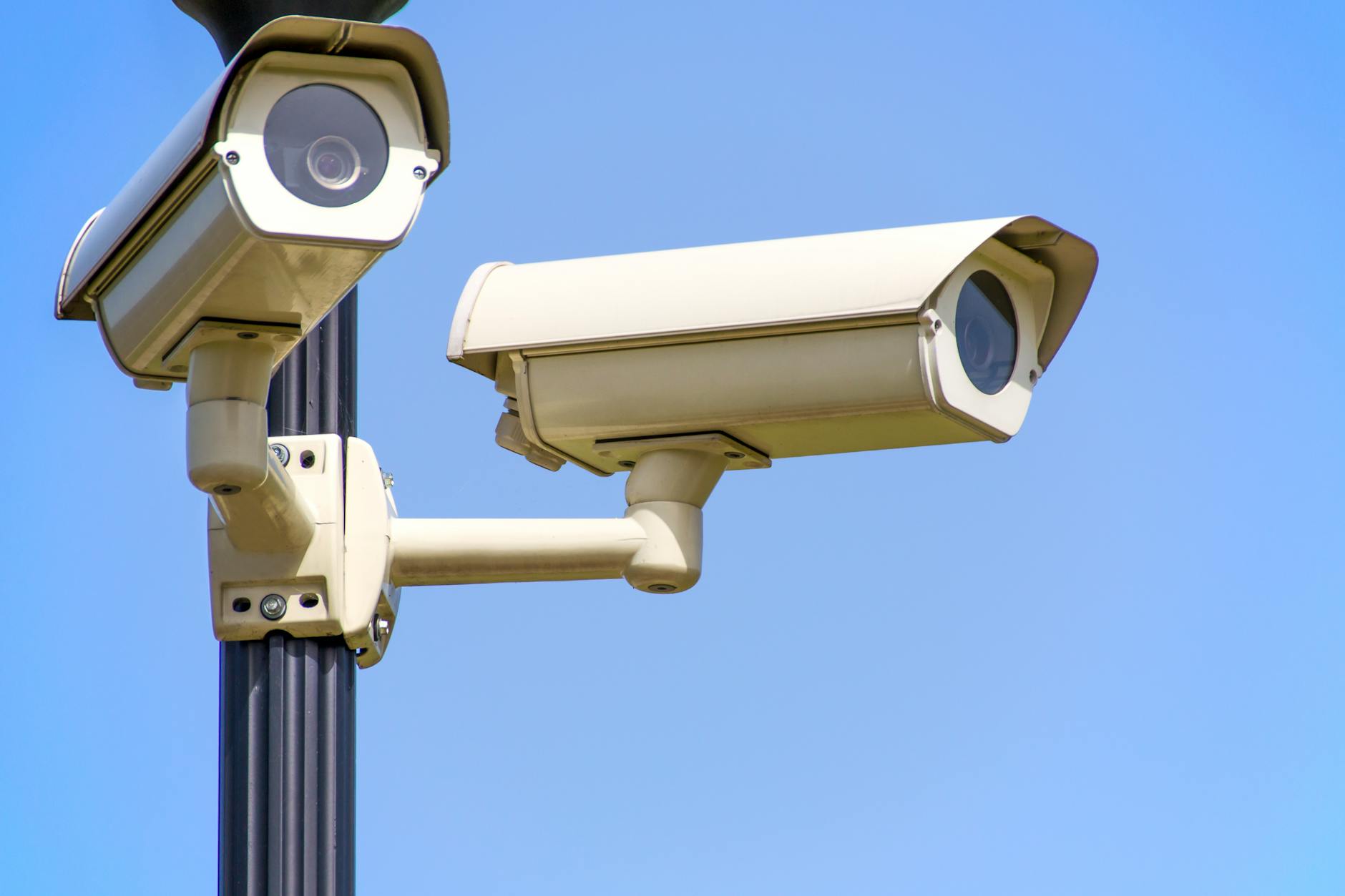Unveiling the Future: Cutting-Edge Security Technology for Enhanced Observation
Unlocking the untold potential: A sneak peek into the next level of surveillance – cutting-edge security technology revealed!

Image courtesy of PhotoMIX Company via Pexels
Table of Contents
- The Evolution of Security Technology
- Advancements in Surveillance Camera Technology
- Innovations in Intrusion Detection Systems
- Advantages of AI-Assisted Video Analytics
- Integration of Security Technology with Internet of Things (IoT) Devices
- Challenges and Considerations for Implementation
- Case Studies: Real-World Application and Impact
- The Future Perspectives of Observation Security Technology
- Conclusion: Embrace the Revolution in Observation Security Technology
Welcome to our blog! Today, we are excited to take you on a journey through the latest security technology that is revolutionizing observation systems. In a world where safety and security have become paramount, advancements in surveillance and intrusion detection systems play a crucial role in protecting people and assets. Let’s dive into the incredible advancements and innovations that are shaping the future of security technology.
The Evolution of Security Technology
In today’s world, observation systems have gained tremendous importance due to the increasing need for enhanced security measures. Traditional observation systems can no longer keep up with the evolving threats faced by organizations, governments, and individuals. As a result, there has been a significant shift towards state-of-the-art solutions that leverage cutting-edge technology and provide superior protection.
Exciting advancements in security tech are shaping a safer future! Unveiling the latest cutting-edge solutions that enhance observation. #FutureSecurity #Innovation [insert link]Tweet Quote
Advancements in Surveillance Camera Technology
Surveillance cameras have come a long way in terms of capabilities and performance. The latest cameras offer enhanced imaging features, including high-definition video, superior night vision, and wide-angle 360-degree views. These advancements allow for greater visibility and clarity during monitoring, ensuring that no detail goes unnoticed.
One of the most exciting developments in surveillance camera technology is the integration of artificial intelligence (AI). AI algorithms enable real-time analysis and object recognition, making it possible to detect threats and identify suspicious activities automatically. Such advancements in AI empower security personnel with actionable intelligence, allowing for swift and effective response when needed.
In addition, cloud storage and remote access have revolutionized surveillance systems. With cloud storage, footage can be stored securely off-site, eliminating the need for physical tape backups and reducing the risk of data loss. Remote access enables seamless monitoring from anywhere, providing flexibility and convenience to security personnel.
The rise of thermal cameras is also noteworthy. These cameras can detect body temperature, enabling quick identification of potential risks, such as high fever associated with infectious diseases. Thermal cameras have proven especially valuable in public spaces, healthcare facilities, and airports, aiding in the prevention and control of outbreaks.
Facial recognition technology has also made strides in recent years. With improved accuracy and reliability, facial recognition enhances identification and access control systems. From airports to corporate buildings, this technology streamlines security processes and strengthens overall safety measures.
Innovations in Intrusion Detection Systems
Intrusion detection systems have witnessed significant advancements, enabling more accurate identification and filtration of potential threats. Smart sensors and motion detection algorithms work in tandem to detect and mitigate suspicious activities. By minimizing false alarms, these systems ensure that security personnel focus on genuine threats, saving time and resources.
Machine Learning algorithms have transformed intrusion detection systems into adaptive security solutions. These systems learn from patterns and can differentiate between regular activities and anomalous behavior, prompting alerts when necessary. Such intelligent systems provide a higher level of threat detection and prevention while minimizing false alarms.
Audio recognition technology has proven to be an innovative addition to intrusion detection systems. By identifying specific sounds associated with danger, such as gunshots or breaking glass, security personnel can be alerted instantly, allowing for rapid response and greater situational awareness.
Furthermore, vibration and seismic sensors have become critical in detecting illegal activities, including underground digging or tunneling. By monitoring ground vibrations, security systems can identify potential breaches and trespassing, reinforcing perimeter security and protecting critical assets.
Advantages of AI-Assisted Video Analytics
AI-assisted video analytics is transforming the way organizations harness surveillance data. By employing AI algorithms, video analytics systems can recognize unusual behaviors, enabling proactive threat detection. These systems automatically alert security personnel when abnormal activities are detected, allowing for swift intervention and prevention of potential incidents.
Traffic management is another area where AI-assisted video analytics proves invaluable. By leveraging real-time monitoring and intelligent algorithms, these systems can optimize traffic flow, adapt traffic control strategies, and minimize congestion. This enhances overall safety and efficiency on roads and in public spaces.
Crowd analysis is another remarkable application of AI-assisted video analytics. By monitoring crowd densities, movement patterns, and security risks, these systems offer invaluable insights for security planning and response. Whether it’s a large-scale event or a crowded train station, crowd analysis technology empowers organizations to maintain public safety effectively.
License plate recognition technology has found widespread adoption in law enforcement and access control systems. By automatically identifying and logging license plates, this technology helps law enforcement agencies investigate and solve crimes more efficiently. Additionally, it facilitates access control, ensuring authorized entry in restricted areas.
Predictive maintenance is an emerging application of video analytics. By analyzing data from surveillance systems, these solutions can detect early signs of technical failures, allowing for timely maintenance and minimizing system downtime. Predictive maintenance saves costs and ensures optimal performance of security infrastructure.
Integration of Security Technology with Internet of Things (IoT) Devices
The integration of security technology with IoT devices has opened up new possibilities for comprehensive situational awareness. Smart sensors, IoT-enabled cameras, and other devices work together to create a holistic security ecosystem. The seamless communication and interoperability of security systems through IoT enable efficient control and monitoring.
Centralized control and monitoring platforms empower security personnel with a single interface to manage and monitor multiple devices. This simplifies operations and enhances efficiency, enabling quick response and reducing the risk of human error.
Integration with other IoT devices, such as smart lighting and access control systems, further strengthens security. By creating an interconnected network, organizations can respond to security incidents in a coordinated and efficient manner.
Integration of Security Technology with Internet of Things (IoT) Devices
Implementing advanced security technology comes with its own set of challenges and considerations. Data privacy concerns and ethical considerations are at the forefront. Organizations must ensure that surveillance systems adhere to privacy regulations and respect individuals’ rights. Transparency and consent are crucial when deploying technologies that collect and process personal data.
Compatibility and scalability should be carefully evaluated before implementing security technology. Existing infrastructure must support the new systems, and future growth must be taken into account. To ensure long-term sustainability, organizations should choose scalable solutions that can adapt to evolving security needs.
Infrastructure requirements and cost implications should be thoroughly evaluated before deploying state-of-the-art security systems. Investments in equipment, installation, and maintenance can be significant. However, the benefits of enhanced security and the potential cost savings from preventing incidents often outweigh the initial expenses.
Cybersecurity must be a top priority when implementing advanced surveillance systems. As these systems become more interconnected, securing them against cyber threats becomes paramount. Organizations should invest in robust cybersecurity measures to protect their surveillance infrastructure and prevent unauthorized access or data breaches.
Challenges and Considerations for Implementation
The impact of cutting-edge security technology can be seen through various successful implementations in critical infrastructures, government entities, and corporate sectors. For instance, airports worldwide have greatly enhanced their security measures by implementing advanced observation systems. Facial recognition technology, intelligent video analytics, and thermal cameras have played a crucial role in maintaining secure environments and preventing potential threats.
Similarly, retail stores have benefited from advanced security technology, successfully deterring theft and ensuring the safety of both customers and employees. By leveraging AI-assisted video analytics and intrusion detection systems, incidents can be detected in real-time, allowing for swift response and apprehension of criminals.
Government agencies have also embraced the power of security technology. By integrating surveillance systems with other IoT devices, such as smart sensors and emergency response systems, governments can create a comprehensive security ecosystem. This enables effective disaster management and immediate response in times of crisis.
Case Studies: Real-World Application and Impact
The innovative advancements that we have explored are just the beginning of what is to come in observation security technology. The future holds exciting opportunities for continued integration of AI and machine learning, allowing for even more sophisticated systems capable of proactive threat prevention and mitigation.
Improvements in predictive capabilities and threat analysis systems will enable security personnel to anticipate and mitigate risks efficiently. By leveraging real-time data and AI algorithms, surveillance systems will become increasingly proactive, ensuring a safer environment for all.
Collaboration with emerging technologies like 5G and edge computing will further augment observation security technology. Faster response times, higher bandwidth, and efficient data processing will be instrumental in empowering security personnel with real-time information and enabling swift action.
Furthermore, sustainability and energy efficiency will take center stage in the development of surveillance technology. Innovations that reduce power consumption, enable renewable energy use, and promote responsible practices will shape the future of observation security systems.
The Future Perspectives of Observation Security Technology
undefinedStay Ahead with State-of-the-Art Security Tech
Subscribe to our newsletter for exclusive insights on cutting-edge observation solutions.
Conclusion: Embrace the Revolution in Observation Security Technology
The relentless advancements in security technology are reshaping the landscape of observation systems. The integration of AI, IoT, and machine learning is empowering organizations, governments, and individuals to enhance safety, prevent incidents, and respond effectively when needed.
It is imperative for stakeholders to embrace and leverage these cutting-edge advancements. Continued investment in research and development will fuel further innovation, ensuring the constant improvement and evolution of observation security technology.
As we step into the future, we have an opportunity to create a world where security is proactive, threats are anticipated, and response is swift. Let’s seize this opportunity and build a safer, more secure future for all.


